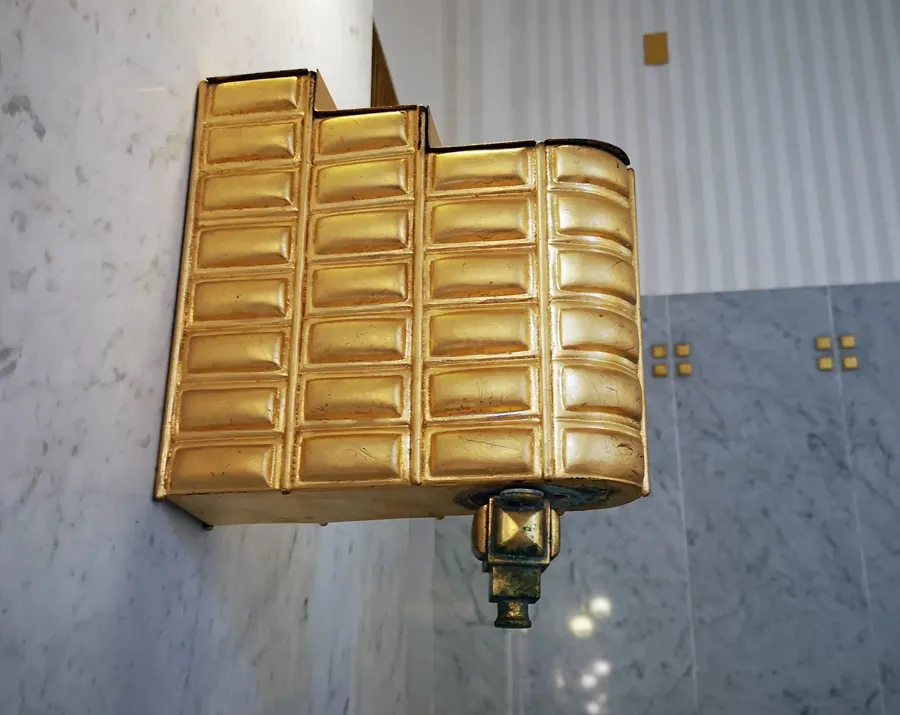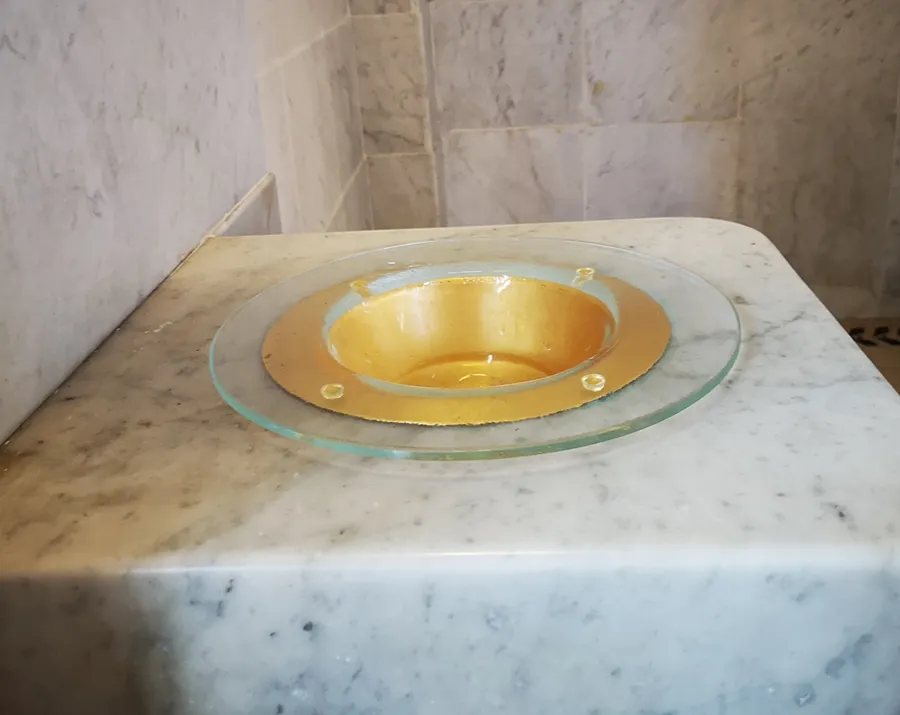Ästhetik und Zweckmäßigkeit. Für die Ärmsten das Schönste. Diese Aussage wird
Otto Wagner, dem Architekten der Kirche am Steinhof, zugeschrieben. Für mich zählt die Kirche auf dem Areal der ehemals größten "Irrenanstalt" Europas zu den schönsten Sakralbauten in Wien. Über das zu Beginn des 20. Jahrhunderts im Jugendstil errichtete Äußere des Gebäudes habe ich in
diesem Artikel berichtet. Dass auch die Innenarchitektur sehenswert ist, möchte ich in diesem Beitrag zeigen.
Aesthetics and practical For the poorest the most beautiful. This statement is attributed to
Otto Wagner, the architect of the church at Steinhof. For me, the church on the areal of the in former times largest "madhouse" in Europe is one of the most beautiful sacred buildings in Vienna. In
this post I have described the exterior of the building, which was built in Art Nouveau style at the beginning of the 20th century. Today I would like to show that the interior design is also worth seeing.
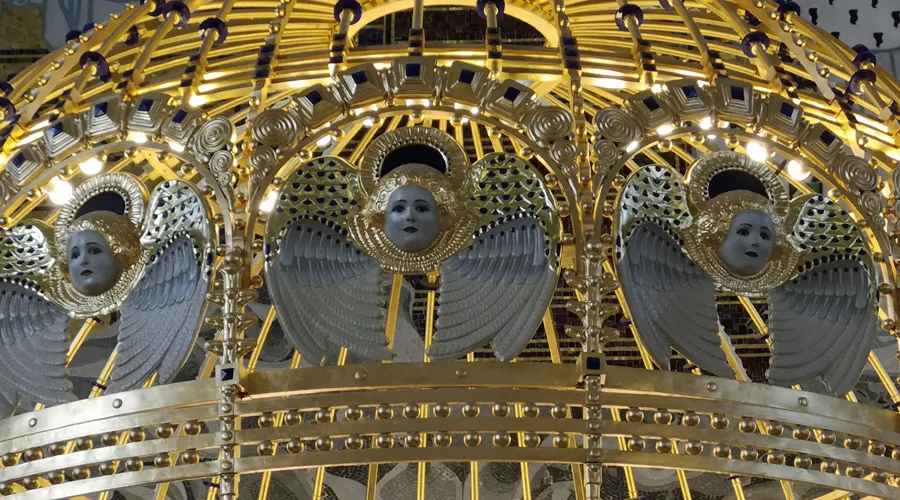
Der Zeit vorausDie Errichtung des Gotteshauses wurde von den kirchlichen Behörden mit Skepsis und vielen Einsprüchen verfolgt. Wagners Konzept eines zeitgemäßen Kirchenbaus mit viel Licht, Zweckdienlichkeit und Komfort sowie der Einsatz von armiertem Beton, Kupfer, Glas und dünnen Marmorplatten stießen auf Unverständnis und wurden als gotteslästerlich abgetan. Nur fernab des Stadtzentrums und aufgrund des Umstandes, dass es sich hierbei um eine Anstaltskirche für "Geisteskranke" handelt, ließ man den Architekten gewähren.
Ahead of timeThe construction of the church was followed by the church authorities with skepticism and many objections. Wagner's concept of a contemporary church building with lots of light, functionality and comfort as well as the use of reinforced concrete, copper, glass and thin marble slabs was not understood and was considered as blasphemous.
Only far away from the city centre and due to the fact that it was a place of worship for the "insane", the architect was allowed to build it.
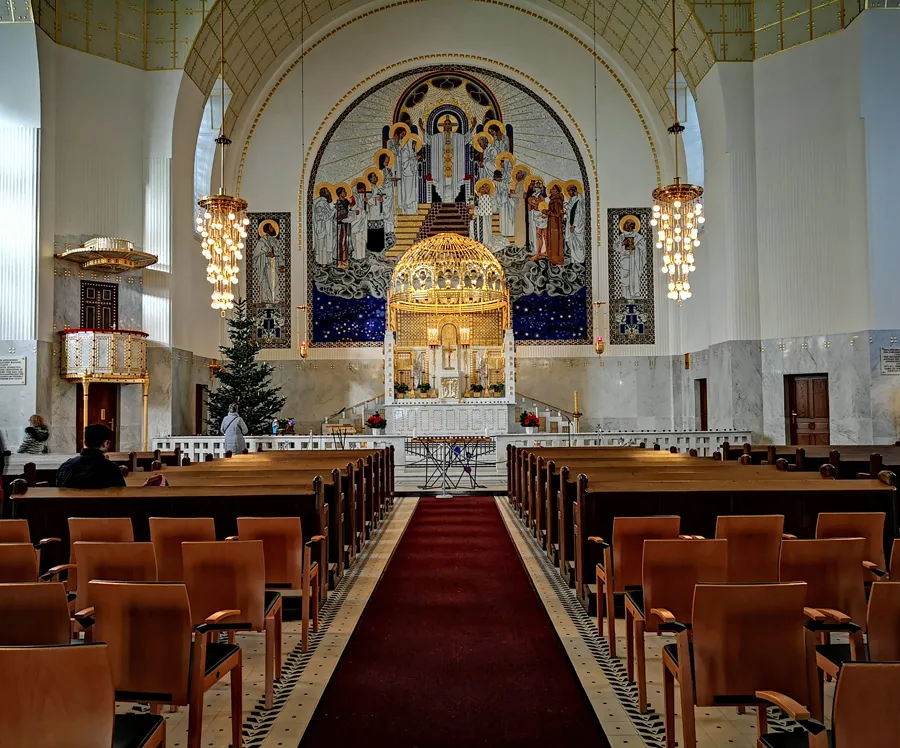
Der helle Innenraum, in dem Weiß und Gold dominieren, ist ein Paradebeispiel des Wiener Jugendstils. Jedes Detail wurde nicht nur nach künstlerischen Gesichtspunkten, sondern auch im Hinblick auf die spezielle Verwendung der Kirche für psychisch kranke Patienten geplant.
The bright interior, dominated by white and gold, is a prime example of Viennese Art Nouveau. Every detail was planned not only from an artistic point of view, but also with regard to the special use of the church for the mentally ill patients.
Die Überlegungen des Architekten in Bezug auf Hygiene und Versorgung der Kranken waren seinerzeit nahezu revolutionär. So verbannte er das Weihwasserbecken mit stehendem Gewässer und ersetzte es durch einen Spender, aus dem das geweihte Wasser tröpfelte. Dadurch sollten Infektionen und auch ungebührliches "Pritscheln" verhindert werden.
The architect's ideas about hygiene and caring for the patients were almost revolutionary at the time. He banned the holy water basin with standing water and replaced it with a dispenser from which the consecrated water trickled. This was intended to prevent infections and undue "splashing around".
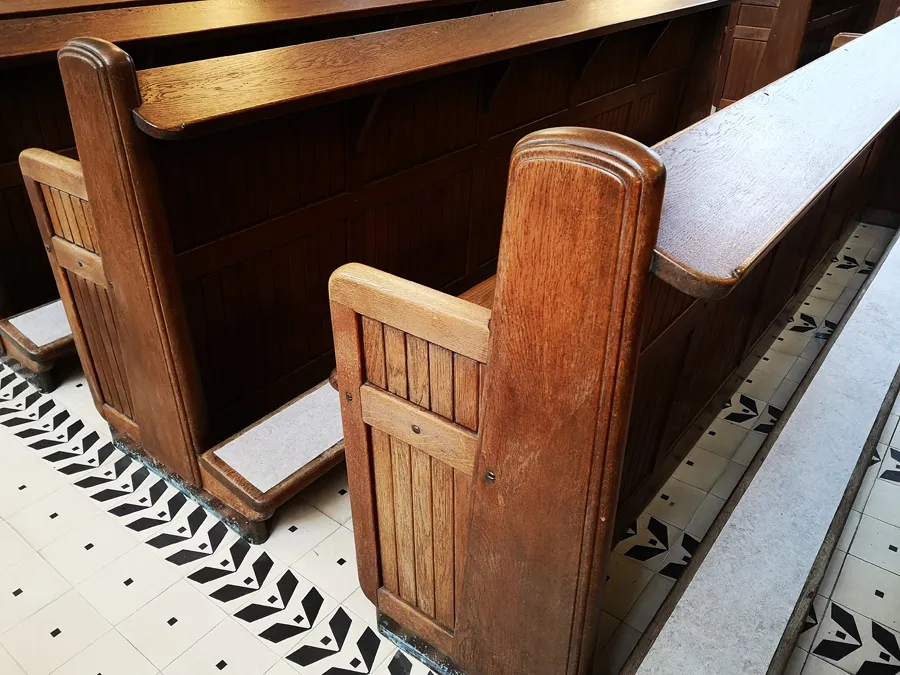

Der geflieste Fußboden fällt zum Altar hin ab, um auch aus den hinteren Reihen eine gute Sicht zu gewährleisten. Die kurzen Kirchenbänke ermöglichen ein rasches Eingreifen der Pfleger im Notfall. Um die Verletzungsgefahr zu minimieren, wurden die Betstühle ohne scharfe Ecken und Kanten verarbeitet. Die Beichtstühle sind offen. Sie wurden ebenso wie die Betstühle zwecks einfacher Reinigung am Boden mit Kupferbeschlägen versehen. Außerdem wurden ein Arztzimmer, ein Erste-Hilfe-Raum und Toiletten eingebaut.
The tiled floor drops down to the altar to ensure a good view from the back rows as well. The short pews allow quick intervention by the carers in case of emergency. In order to minimise the risk of injury, the prayer benches have been manufactured without sharp corners and edges. The confessionals are open. Like the prayer chairs, they were fitted with copper on the floor for easier cleaning. In addition, a doctor's room, a first aid room and toilets were installed.
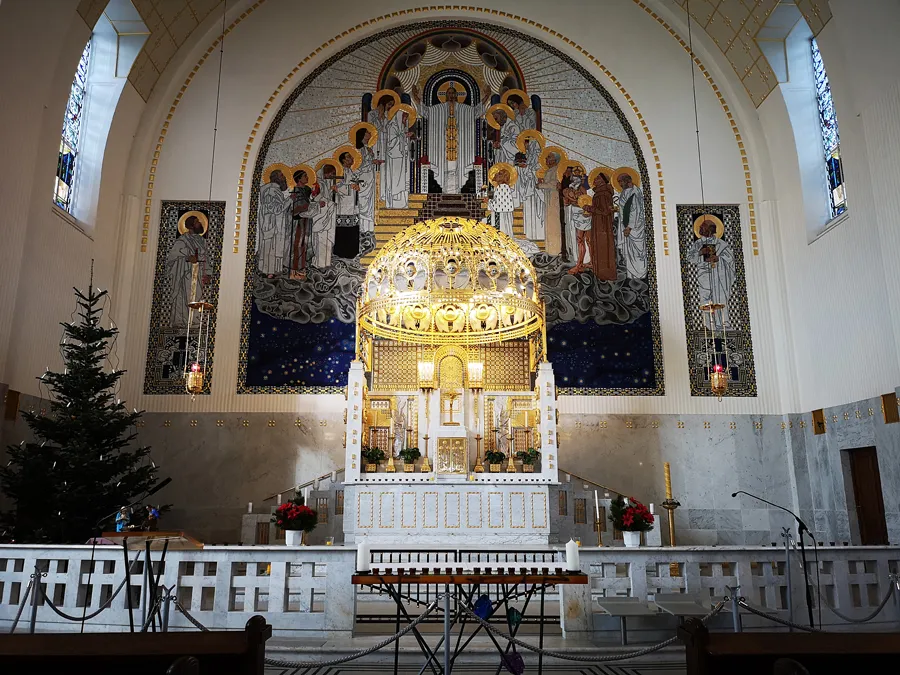
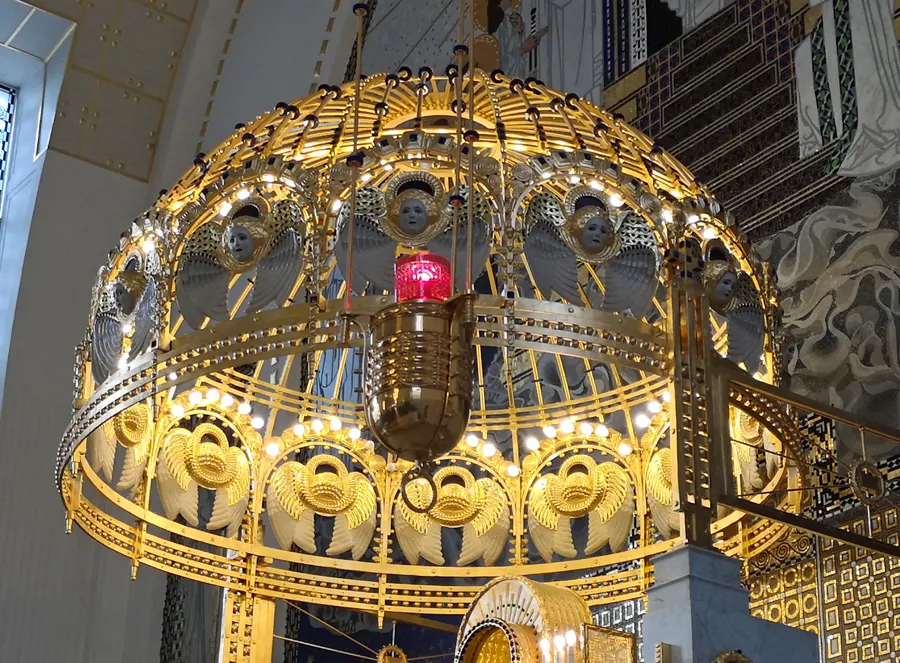

Betritt man die Kirche, so wird der Blick auf den Altar gelenkt. Das Mosaikbild hinter dem Hochaltar wurde von
Remigius Geyling entworfen und von
Leopold Forster ausgeführt. Über dem Altar schwebt ein vergoldeter Baldachin mit einer Rückwand aus Kristallglas.
When entering the church, the view is directed to the altar. The mosaic picture behind the high altar was designed by
Remigius Geyling and executed by
Leopold Forster. Above the altar hangs a gilded baldachin with a back wall of crystal glass.
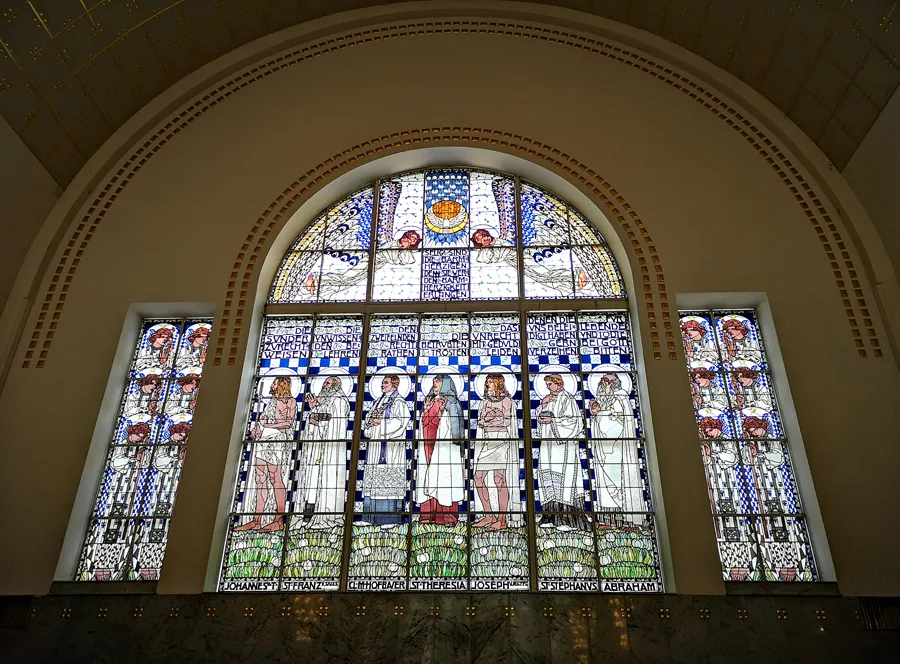
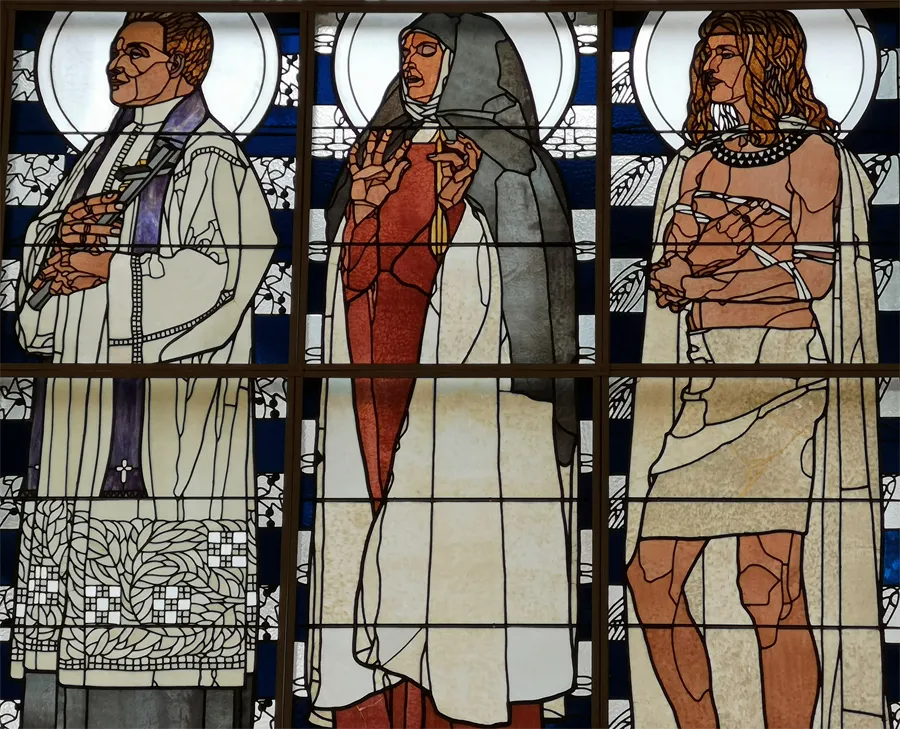
Die Glasmosaikfenster im Tiffany-Stil prägen wesentlich den Gesamteindruck der Kirche. Für den Entwurf zeichnet
Koloman Moser verantwortlich, ausgeführt wurden die Fenster von
Leopold Forstner. Die Farben wurden nicht, wie damals üblich, aufgemalt, sondern im Material des Glases eingeschmolzen.
The glass mosaic windows in the Tiffany style essentially shape the overall impression of the church.
Koloman Moser was responsible for the design and
Leopold Forstner for the workmanship of the windows The colours were not painted, as was customary at that time, but melted into the material of the glass.
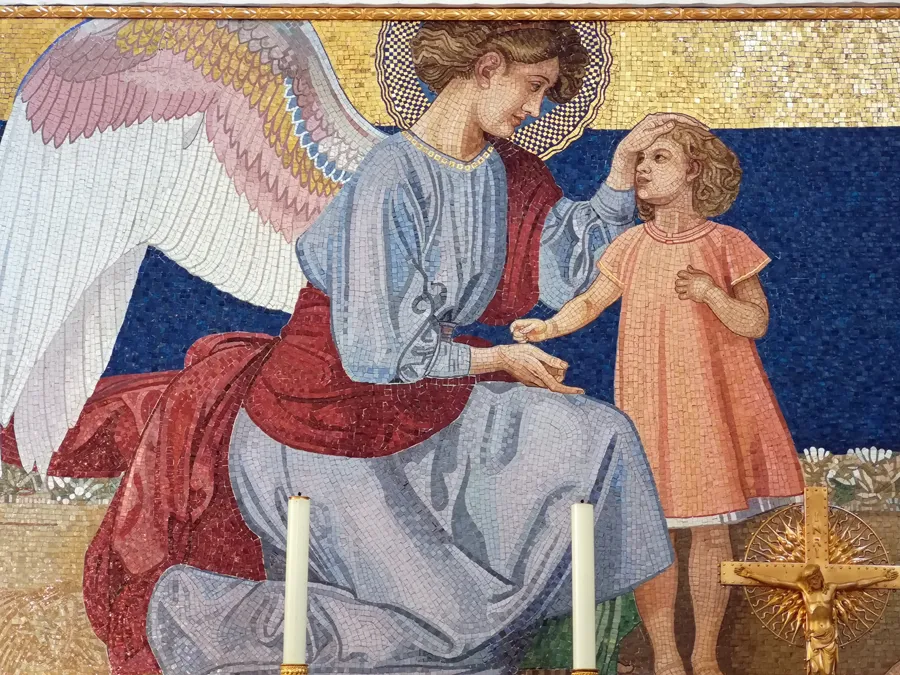
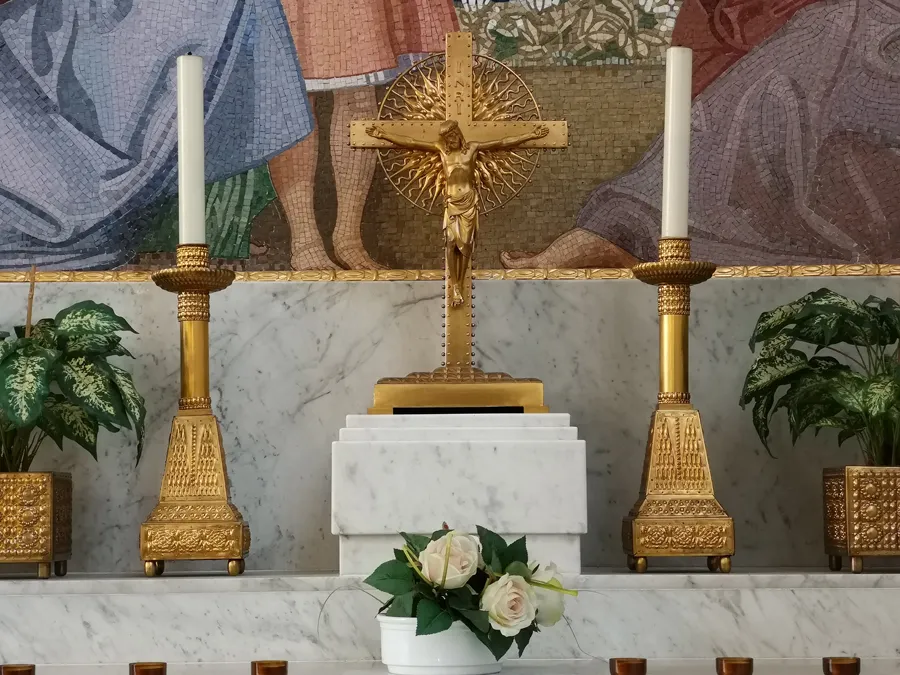
Die Seitenaltäre schmücken Mosaikbilder von
Rudof Rettmar. Bemerkenswert ist, dass es in den Darstellungen bis auf das Kreuz mit Christus keine Leid-Motive gibt.
The side altars are decorated with mosaic pictures by
Rudof Rettmar. It is remarkable that there are no motifs of suffering in the depictions except for the cross with Christ.

Aus Sicherheitsgründen ist die Kanzel nur über eine Treppe von der Sakristei aus erreichbar.
For safety reasons, the pulpit can only be reached by stairs from the sacristy.
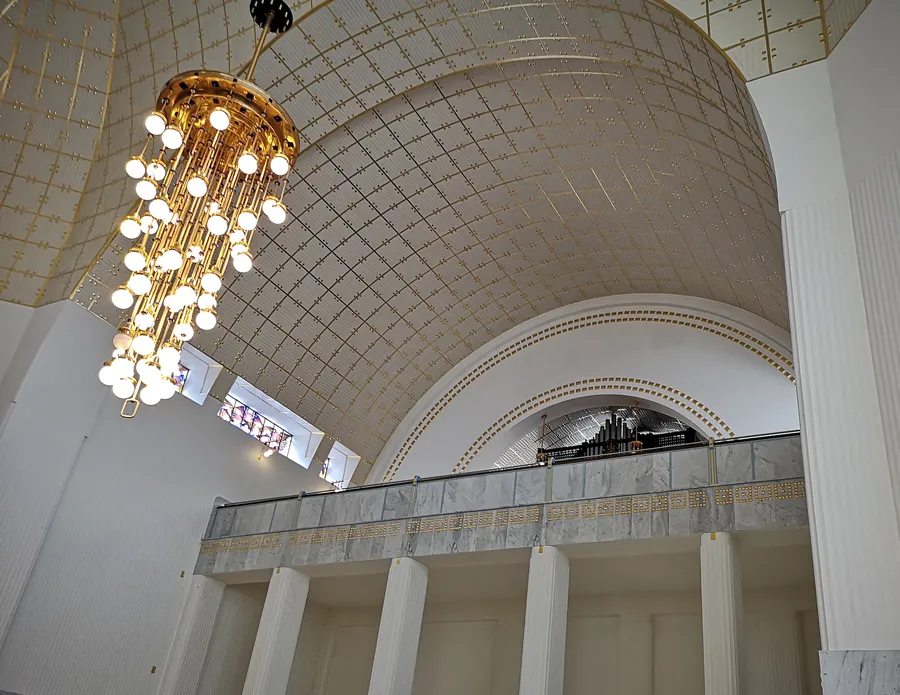
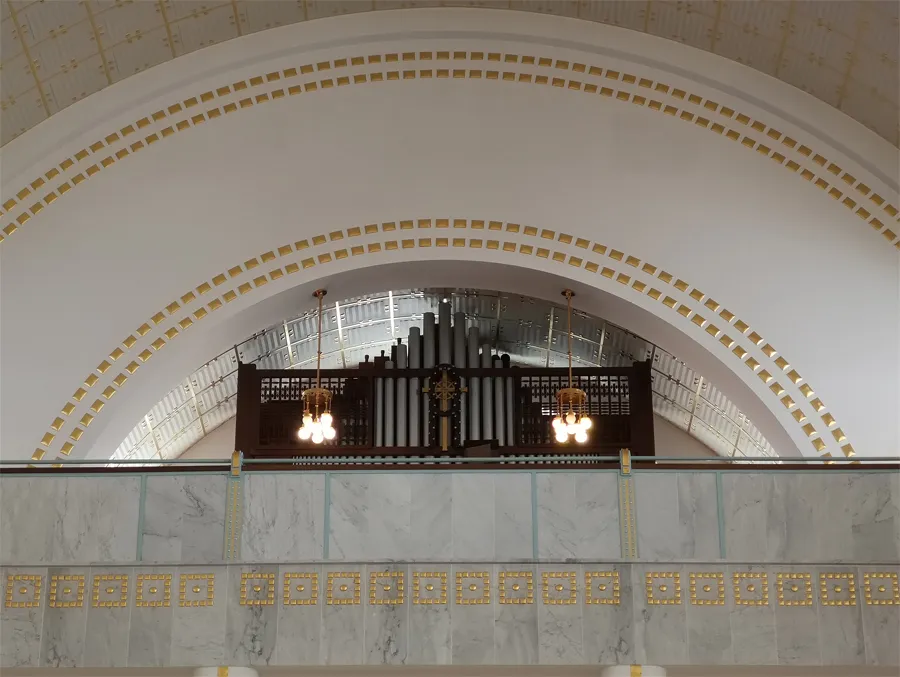
Die Empore ist nur von außen erreichbar und war daher für die Patienten nicht zugänglich. Die Orgel wurde von
Franz Josef Swoboda entworfen.
The gallery is only accessible from the outside and was therefore not reachable for the patients. The organ was designed by Franz Josef Swoboda.
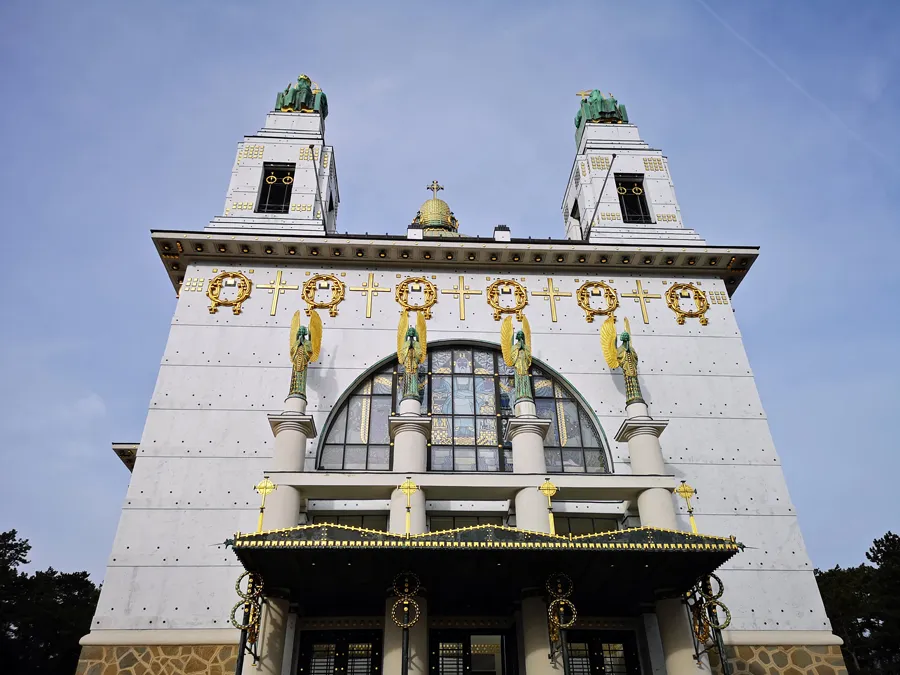
Nach jahrelangen Restaurierungs- und Renovierungsarbeiten wurde die Kirche am Steinhof im Oktober 2006 der Öffentlichkeit wieder zugänglich gemacht. Die Kirche präsentiert sich heute wie bei ihrer Eröffnung im Jahr 1907. Besichtigt werden kann dieses Jugendstil-Juwel am Samstag von 16 bis 17 Uhr und Sonntag von 12 bis 16 Uhr. Es werden auch spezielle Führungen angeboten. Der Erhaltungsbeitrag beträgt fünf Euro.
After years of restoration and renovation work, the church at Steinhof was opened to the public again in October 2006. The church presents itself today as it did when it was opened in 1907. This Art Nouveau jewel can be visited on Saturday from 16:00 to 17:00 and Sunday from 12:00 to 16:00. Special guided tours are also offered. The maintenance contribution amounts to five euro.
Kirche am Steinhof / Church of St. Leopold1140 Wien, Baumgartner Höhe 1


